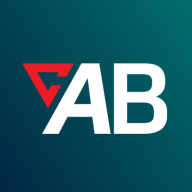


We performed a comparison between ActiveBatch Workload Automation and Automic Workload Automation based on our users’ reviews in five categories. After reading all of the collected data, you can find our conclusion below.
Features: ActiveBatch Workload Automation is highly regarded for its flexibility, simplicity, and ready-made tasks. It provides live monitoring, automatic scheduling, and effective resource management. Automic Workload Automation receives acclaim for its strength, scalability, and straightforward integration. It enables control over various operating systems and products, offering a wide array of features and a user-friendly interface.
ActiveBatch Workload Automation can be enhanced in areas such as managed file transfer, licensing, cloud aspect, user interface, reliability of triggers, monitoring dashboard, price, documentation, support, and integration capabilities. Automic Workload Automation requires improvement in automation sets, language support, functionality, interface, web-based edition, file transfer, pricing, and support.
Service and Support: ActiveBatch Workload Automation has been praised for its customer service, specifically its helpful and responsive technical support. However, there are concerns about the service model and availability of the hotline. Automic Workload Automation has received mixed reviews, with some customers appreciating quick response times and helpful knowledge articles. However, others have faced challenges in reaching support and experienced delays in issue resolution.
Ease of Deployment: The setup process for ActiveBatch Workload Automation is straightforward and uncomplicated, although it can be slightly challenging when implementing it on various operating systems. The initial setup for Automic Workload Automation can be time-consuming and intricate, taking anywhere from one to five days.
Pricing: ActiveBatch Workload Automation is highly regarded for its flexible and reasonably priced setup cost. Users find it to be competitive when compared to other tools. Automic Workload Automation has experienced pricing changes. While some users view it as expensive, they still consider it affordable in comparison to similar solutions.
ROI: Active Workload Automation has been highly regarded for its ability to generate positive financial outcomes, resulting in a notable increase in net revenue ranging from 20% to 30%. Automic Workload Automation did not provide much ROI for users and was perceived as an added expenditure.
Comparison Results: ActiveBatch Workload Automation is the preferred choice when compared to Automic Workload Automation. Users appreciate ActiveBatch for its straightforward setup process and intuitive interface, while Automic is acknowledged to have different degrees of complexity. ActiveBatch is also praised for its versatility, offering prebuilt jobs and a user-friendly configuration.
The design of JAMS makes it very easy to copy jobs and make minimal changes while ensuring functionality.
We require fewer team members to handle operations due to its robust automation.
Automic Automation has helped reduce workload failure rates by fifty percent.
Their response is prompt, exemplifying how support should be.
They are very quick to respond depending on the issue's severity.
We contacted JAMS vendor, who guided us through the necessary steps, and after following their guidance, everything was resolved.
We often need to escalate issues to level two or three for solutions related to long-standing problems.
They react quickly when it is urgent.
They are highly knowledgeable in their product area and very easy to work with.
If you put the tickets in for which you need help right away, they get back to you right away.
We might be underutilizing it, but as more jobs require processing, additional servers would be necessary.
JAMS's scalability is noteworthy; we run 6,000 jobs per day without facing any problems.
ActiveBatch by Redwood's scalability is excellent; it experiences minimal failures and outages.
We have small clients running a thousand tasks per day and big enterprises running one million or two million tasks per day.
The solution effectively supports our existing user base and is equipped to scale further.
It does not perform real-time scalability in our environment, but because of the way we have built it, it can scale well past any thresholds with no issues.
We experience periods of major incidents annually due to capacity constraints, which result in job failures.
Being on the new version, there's been zero downtime.
The stability of the solution is excellent.
In a well-tuned environment, it runs very smoothly.
So far, I have not encountered any issues related to instability such as lagging, crashing, or downtime.
Another area for improvement would be the addition of source control for jobs internally, as this feature would solve several problems for me.
A major improvement would be the integration of AI to help us accomplish various tasks.
If around 5,000 or more jobs run at a time, JAMS slows down, and we have to wait around five to 10 minutes or restart JAMS scheduler services.
On the web console, users encounter daily activity issues where the job instances do not appear or update correctly, and they cannot view the latest logs.
I believe ActiveBatch by Redwood could be improved because the UI could be modernized.
It does not work as well for activities that require real-time input/output, but it works very well for batch, ETL, or similar cases.
Pricing is a major issue for some clients due to changes in Broadcom's pricing model, causing some to seek alternative solutions.
A feature that provides a dependency chart or tree diagram would be very helpful.
The price is fair considering the functionality and importance of the tool, although the increase did unsettle our management.
My experience with pricing, setup cost, and licensing for ActiveBatch by Redwood has been great
Broadcom decided to change the way of licensing by moving to the number of jobs runs and then they say that clients have to pay three million because they run one million jobs per day.
Due to the increased pricing, some of them are thinking of reducing tasks in Automic to have fewer executions.
The pricing has been increasing significantly over the years, raising operational costs instead of reducing them.
JAMS has positively impacted my organization by completely removing the headache of scheduling jobs, not just for the organization but for all internal operations teams need.
This efficient feature has been invaluable, enabling us to streamline our workflow and enhance productivity.
The most valuable feature of JAMS is its user-friendly interface, especially after upgrading from version six to seven.
The addition of AI has made troubleshooting and supporting users through ActiveBatch by Redwood quicker for me.
The best feature that ActiveBatch by Redwood offers is the user interface.
A standout feature is the comprehensive versioning, allowing easy rollback to previous states.
Designing workflows is made easier by the graphical user interface, simplifying complex tasks.
It supports high availability by operating multiple servers concurrently, which means users do not experience outages or the need to log in again, even if some servers are updated.
| Product | Market Share (%) |
|---|---|
| Automic Automation | 7.3% |
| JAMS | 2.3% |
| ActiveBatch by Redwood | 2.8% |
| Other | 87.6% |


| Company Size | Count |
|---|---|
| Small Business | 11 |
| Midsize Enterprise | 8 |
| Large Enterprise | 18 |
| Company Size | Count |
|---|---|
| Small Business | 11 |
| Midsize Enterprise | 13 |
| Large Enterprise | 47 |
| Company Size | Count |
|---|---|
| Small Business | 19 |
| Midsize Enterprise | 14 |
| Large Enterprise | 67 |
JAMS is an automation and job scheduling solution designed for workflow optimization, catering to businesses large and small with flexible licensing and integration options.
Offering both Core and Advanced packages, JAMS supports a range of environments from small teams to large-scale operations. Its standout features include integration with platforms like PowerShell, SQL, and SAP, coupled with capabilities such as dependency management and natural language scheduling. JAMS simplifies job management, centralizes workflows, and boosts productivity with its robust automation features. Customizable workflows and insightful logging make it adaptable for diverse needs, supported by responsive customer service ensuring seamless operations.
What are JAMS's key features?In industries, JAMS is employed for automating workflows and managing batch jobs. Organizations utilize it for SSIS, SQL Server tasks, file transfers, and integrating with vendor systems, achieving efficient file automation and data management. Scheduler enables precise execution of thousands of tasks daily, enhancing operational efficiency.
ActiveBatch by Redwood enhances efficiency with features like job scheduling, integration, and real-time monitoring. It supports diverse platforms, automates tasks, and offers a single-pane view with robust security.
ActiveBatch streamlines automation by offering drag-and-drop functionality, pre-built job steps, and native integrations. Its customizable workflows and alert system aid in managing complex workloads like data processing and server monitoring across hybrid environments. While it effectively reduces manual errors and enhances productivity, areas like navigation and support for cloud platforms need enhancement. New users may face challenges due to its complexity and steep learning curve, and further improvements in reporting, mobile access, and training could provide additional support to users.
What important features does ActiveBatch offer?In finance, ActiveBatch is implemented for orchestrating batch processes and data management. The healthcare industry utilizes it for automating patient data updates and server monitoring, while the retail sector benefits from file transfers and inventory management automation.
Automic Automation offers a web-based GUI for high scalability and flexibility, integrating with platforms like SAP and Oracle. It promotes efficient process automation and supports multiple OS environments, benefiting diverse industries with its robust predictive capabilities.
Automic Automation facilitates process automation and workload management, providing valuable integration with applications like SAP and Oracle. It supports a wide range of operating systems and environments, enabling seamless workflow automation. It features a web-based interface accessible across devices, ensuring scalability and flexibility for complex job automation. Users find its predictive capabilities and platform support instrumental in enhancing operations, although improvements are noted in reporting, cloud integration, and documentation. Licensing and pricing structures also present room for optimization, along with workflow dependency management and smoother upgrade paths.
What are the key features of Automic Automation?
What benefits and ROI should users expect from Automic Automation?
Automic Automation sees implementation in industries like banking, finance, and telecommunications, where it automates ERP systems, schedules batch jobs, integrates workloads, and manages file transfers. By supporting SAP, Oracle, and ETL tasks, it aids efficiency and workload automation across varied environments including cloud and mainframe systems.
We monitor all Workload Automation reviews to prevent fraudulent reviews and keep review quality high. We do not post reviews by company employees or direct competitors. We validate each review for authenticity via cross-reference with LinkedIn, and personal follow-up with the reviewer when necessary.